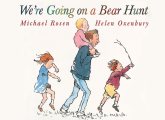This activity boosts nature connection, cultivates creativity, and provides opportunities to explore cause and effect, says Sarah Watkins…
When I introduced the idea of paint making to my class, it prompted great discussion around what paint is made of and the colours we’d need. “We need yellow to paint the sun,” commented one child, “could we use dandelions?”
Outside, we examined some dandelions. I dug one up so that we could look at the stem, leaves, roots and flower. We talked about how these and other brightly coloured flowers attract beneficial insects. (Bees are most attracted to purple, violet and blue, but also dandelions.)
Another child suggested that we just use the dandelion heads to make yellow, so we harvested some (alternatively, you can use mustard powder or turmeric). We got hands-on with a range of fruit and vegetables including spinach leaves, beetroot, blueberries, blackberries, and red cabbage.
The children described what they could see and feel, using vocabulary such as “rough”, “smooth”, “squidgy”, “soft”. Not many had seen fresh beetroot before and exclaimed excitedly at the vivid colour within!
I invited predictions on which colour each item might make and ideas on how to create paint from them. The children instantly wanted to cut or squash the food! First though, we drew them in our sketchbooks, which fits in well with the area of the EYFS framework about children exploring the natural world around them.
Next, we worked on our fine motor skills. With aprons on, the children chopped and squished, pushing the food through sieves. We then blitzed the small pieces in a blender, adding water gradually and a little flour until we had a paint-like consistency. (I washed the container out after each different plant.) We used pickled beetroot from a jar, to avoid having to cook it.
The dandelions made yellow paint, the spinach made green, the blackberries made blue, and the beets, blueberries and red cabbage made red. I took some of the red cabbage and added baking soda, which instantly turned it blue. Cue great excitement! (When you add vinegar, it turns pink.)
We poured our freshly made paint into containers and talked about how to make colours such as purple or green, which is more challenging with plant-based paint! I provided a range of different-sized paintbrushes for the children to choose from; some preferred to paint with their fingers!
As the children created their artwork, we talked together about the differences between our homemade paint and the paint we usually use: “The blueberry paint smells yummy!” The children noticed that our paint was thinner and faded a little when it dried. Interestingly, almost every child wanted to paint plants growing.
When the paintings were dry, we talked about the content of each other’s artwork and the techniques used – a process which helps develop empathy and appreciation. To inspire further experimentation, I put out powder paints that the children could independently mix together, plus fresh fruit and vegetables such as lemons and apples (but not foods that easily stain such as beetroot).
The next stage could be to dye material with your plants. If you’re using red cabbage, spinach or dandelions, chop them up into small pieces and add twice as much water, plus 250ml of vinegar. Heat in a slow cooker for about an hour and blend when cooled. If using blackberries or blueberries, substitute the vinegar with salt.
You can then tie-dye a T-shirt, a plain tote bag or a small square of material. Dampen the fabric with water and put elastic bands at random points around parts of the material. Put it in an old tray or washing up bowl and pour over your dye, using a ladle or a squirty bottle.
Place in a plastic bag and leave in a warm place for 24 hours. Cut off the rubber bands and rinse in cold water. Giving it a short spin in the washing machine should remove any excess dye.
An engaging way to explore different materials, experiment with colour and texture, and use different tools and techniques!
Sarah Watkins is a reception teacher at Ledbury Primary School.

Going on a Bear Hunt activities – Easy preschool ideas
Editors picks
